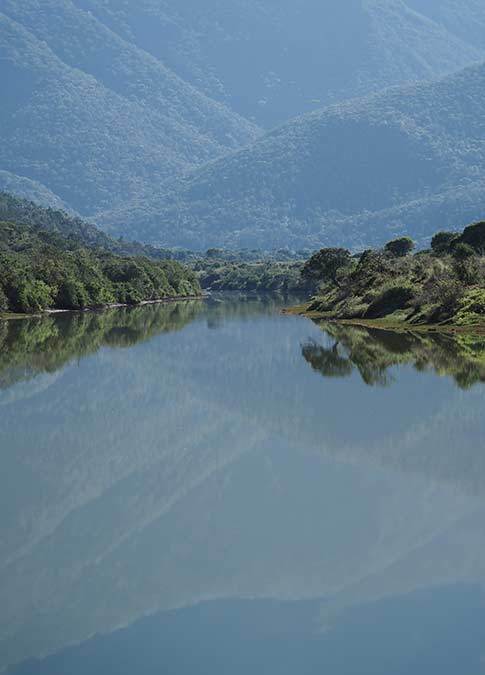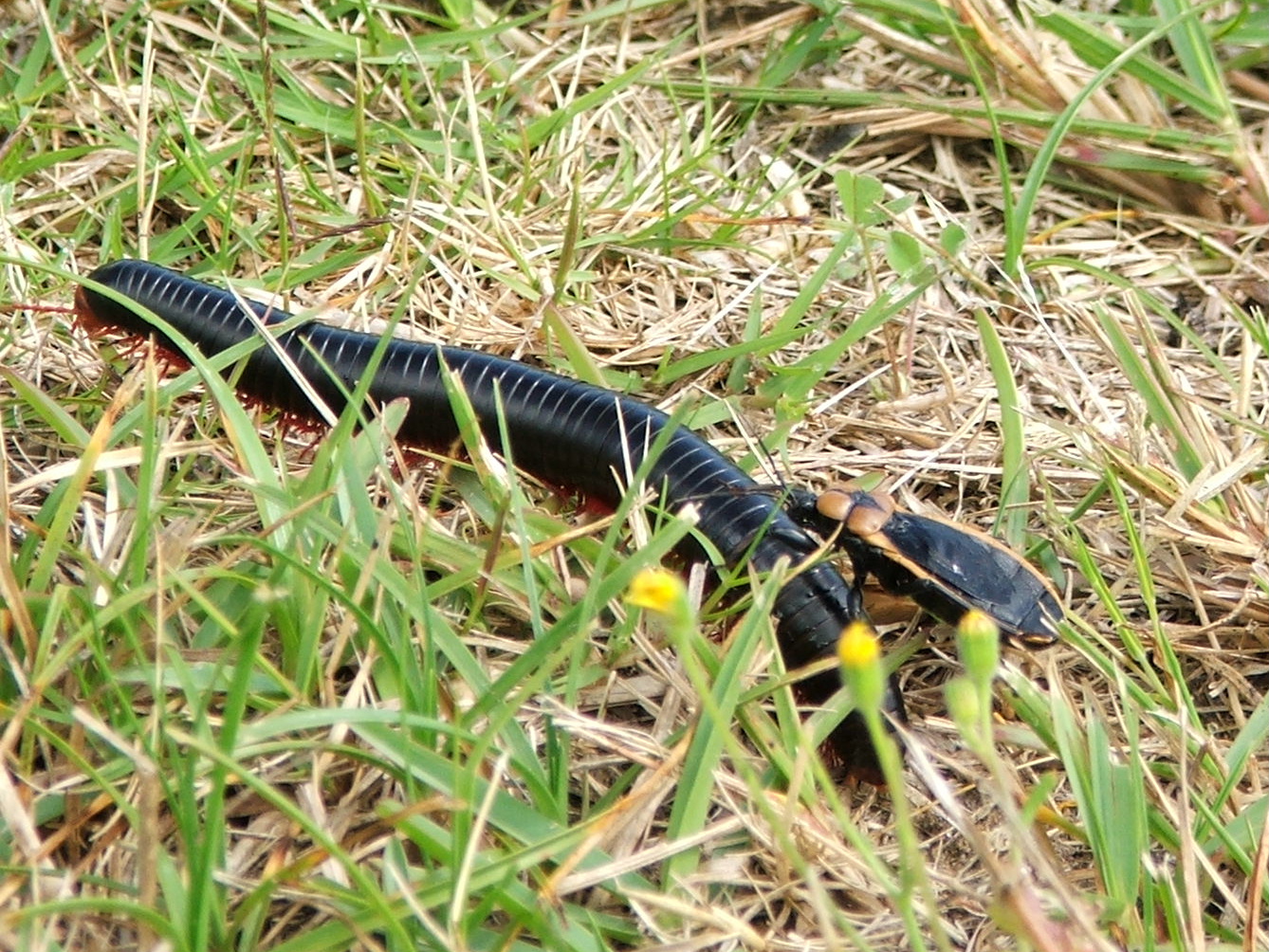Murder most foul
Caryl was the first to come across the scene of the crime, the killer still poised over the writhing body of the victim. She had the presence of mind to take a photograph in order to be able to identify the killer, but far from dashing off he calmly went about his business, taking no notice of her. As a result we were able to make a positive identification and also know at least the family of the deceased.
It turned out that the killer, like the 15th and early 16th century Borgia family, whose treacherous ways were so admirably described by Machiavelli, came from a well-known and wide-spread family of murderers, the Reduviidae. Characteristically they are large and robustly built, hide during the day and stalk their victims at night. Like the Borgias they favour a quick-acting poison, in this case injected by a dagger-like rostrum, or beak that is normally kept sheathed and out of sight. The killer that Caryl photographed was identified as Ectichodia crux, more commonly known as the assassin bug.
The assassin bug is found throughout the country and in all South African game reserves and game parks from the dry, wind-blown sands of the Kalahari Desert to the coastal vegetation of Kariega Game Reserve. During the day one usually finds them beneath stones or hidden in debris and as a result, despite their being ubiquitous, they are seldom seen. They are quite unmistakable, having a shiny black body with a dull yellow-brown thorax with a black cross. The margins of the abdomen are of the same colour as the thorax. Neat and trim, but blending well with their surroundings, one might say that these bugs are dressed to kill.
The bite of the assassin bug, and those of other members of the family is painful, and they are quick to take exception when handled. The bite of the giant assassin bug – Platymeris sp – is not only extremely painful, but its effect lasts for days, however it is a tropical species not found at Kariega Park, and none of the South African members of the family can really be classed as harmful to humans. Nevertheless, should you come across one, treat it with the same respect you would any other carnivore.
World-wide the Reduviidae family contains at least 4 000 species, and among them are some nasties. In North America one member of the family - Reduvius personata - that normally preys on bedbugs, is known as the kissing bug because if no bedbugs are available it attacks humans, mainly on the face and lips. In South America there are even more dangerous bugs, known locally as vinchucas or barbeiros that transmit the Trypanosoma parasite that causes Chagas disease – “the kiss of death”.
Excepting in defence the South African assassin bug has no interest in plunging its dagger into anything other than millipedes, or “songololas” as they are more generally known in South Africa, harmless enough creatures that graze on decayed wood or leaves. Some bright red songololas are capable of spraying in defence a fluid smelling strongly of iodine and containing prussic acid. The Borgia family and assassin bugs are by no means the only creatures that favour toxic substances, but in general the millipedes are not dangerous.
“Nature, red in tooth and claw”, wrote Alfred Tennyson, and which we tend to forget other than when admiring the larger carnivores, the lions and leopards, cheetahs and wild dogs. Meanwhile, at ground level, among the grass-stalks and leaf litter as fierce a struggle for existence goes on among the smaller, less noticeable creatures. However, a struggle for existence is one thing, the downright greed that motivates rhino poachers of whom we have heard so much recently is another.










